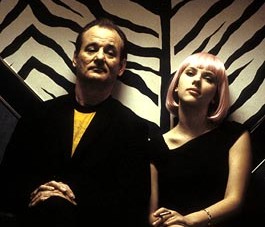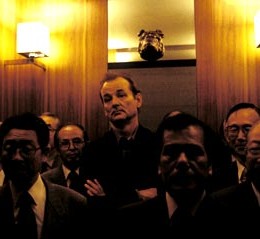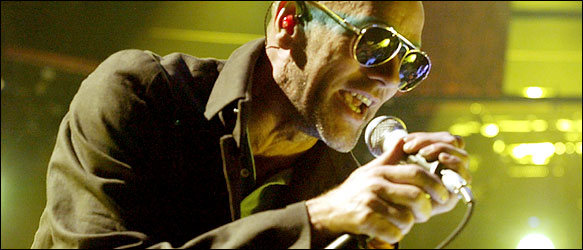France’s five-star hotels appeal to canine connoisseurs. There’s zero chance of my taking Berk to Paris anytime soon, although we do occasionally trek to Taco Bell.
Category: World at Large
Seeking Deke.
With their earlier designs on Nick Van Exel apparently stalled, the Knicks plan (once again) to try for Dikembe Mutombo. Hmm. I guess having Mutombo around would help the height-challenged Knicks…but if we were looking for a 40-something center, why’d we ever trade Patrick Ewing in the first place?
Life and How to Live It.
So R.E.M. came to town Saturday night and played probably the best show I’ve seen by Athens’ finest. (This is my fourth over the past decade.) First the setlist:
1. Finest Worksong 2. What’s The Frequency, Kenneth? 3. Driver 8 4. Drive 5. Animal 6. Fall On Me 7. Daysleeper 8. Bad Day 9. The One I Love 10. World Leader Pretend 11. (Don’t Go Back To) Rockville 12. The Great Beyond 13. Country Feedback |
14. Losing My Religion 15. Find The River 16. She Just Wants To Be 17. Walk Unafraid 18. Man On The Moon 19. Life And How To Live It |
So all in all, a truly excellent show. There were other R.E.M. songs they’re playing on this tour that I’d have loved to hear (Exhuming McCarthy, Feeling Gravity’s Pull), but they played my two favorites (and my top two requests) — Fall on Me and Country Feedback — so I left happy. I was particularly impressed with Walk Unafraid and She Just Wants to Be, two songs off Up and Reveal respectively that really came into their own tonight, when Peter Buck chose them to show off his considerable guitar mojo. And the band wisely skipped some of their more saccharine moments — Everybody Hurts or Strange Currencies, for example — to showcase old hits (Rockville, Gardening) and political tone poems (Final Straw and World Leader Pretend, a special treat.) In sum, Stipe, Buck and Mills still got it, and I’m very much looking forward to their next swing through the area.
ABT Returns.

It’s that time of year again. ABT revs up for its City Center schedule at the end of the month [All dates/Gill’s dates.] Gillian is also featured prominently in the advertising campaign for this fall’s run, as indicated by the pic at right (now gracing brochures and subway stops around the city.) Get your tickets before they sell out!
Buried, but not Dead.
New York prepares for a mass re-burial of over 400 Colonial-era slaves in the spot where they were found 12 years ago. Perhaps this ceremony will help to encourage more formal and historic recognition of the city’s relationship to slavery. (As the article notes, Gotham once held more slaves than any other city but Charleston.) And as New York, so too the nation — While the Holocaust Museum serves as an important and necessary reminder of how nations ostensibly grounded in Enlightenment ideals can go terribly, terribly wrong, it’s a bit glaring that we have such a fine museum in Washington dedicated to Germany’s most grievous sin, without any comparable historic institution focusing on our own. A National Museum of Slavery is well past due, and, Civil War importance aside, it should really be on the National Mall, not in Fredericksburg.
Destination Moon.
As Europe goes to the moon (alas, without Tintin), China prepares to choose the first Taikonaut.
Bicycle Races.
Hey y’all. I’m still feeling a bit burnt from the All-Night Bicycle Ride that’s a famous centerpiece to Kenneth Jackson’s History of NYC course (for which I’m TA’ing at the moment); nevertheless, updates here should now resume the regular schedule.
Between Iraq and a Hard Place.
Facing the lowest numbers of his presidency and a increasingly troubling lack of WMD, Dubya fails to garner any new international support for the reconstruction of Iraq. And what did he expect, after waltzing into the UN and insulting the intelligence of the world? Amateur hour continues at our nation’s peril.
Battle Cry of Falsehood.
In the bookmarks for awhile: James McPherson, author of Battle Cry of Freedom and current head of the AHA, criticizes Dubya’s use of revisionist history and “revisionist history.”
Japanese Whispers.
 So I finally broke my month-long movieless streak last night with Lost in Translation, an unflinching look at the agony and torment of the human soul that is lying around your five-star Tokyo hotel with nothing to do. I’m a bit conflicted on this one…It’s definitely worth seeing – The film is funny, touching, sweet, often entrancing, and Bill Murray is really wonderful in the lead. It captures the disembodied detachment of travel insomnia and the exquisite anticipation of a newly-made connection in ways that belie the standard Hollywood older-man-meets-younger-woman narrative (Re: mogul wish fulfillment.)
So I finally broke my month-long movieless streak last night with Lost in Translation, an unflinching look at the agony and torment of the human soul that is lying around your five-star Tokyo hotel with nothing to do. I’m a bit conflicted on this one…It’s definitely worth seeing – The film is funny, touching, sweet, often entrancing, and Bill Murray is really wonderful in the lead. It captures the disembodied detachment of travel insomnia and the exquisite anticipation of a newly-made connection in ways that belie the standard Hollywood older-man-meets-younger-woman narrative (Re: mogul wish fulfillment.)
All that being said, I do have nagging problems with Translation. For one, as I alluded above, this story could only have been written by deeply privileged people: I found it hard to empathize with Scarlett Johansson’s Charlotte, who responds to being alone on the far side of the world with all kinds of time on her hands mainly by sitting in her hotel room and feeling miserable. (It makes more sense with Murray’s Bob, who’s clearly seen and done it all by now.)
 Plus, it often seems like Sofia Coppola is calling out a few hits on people throughout the film. Charlotte’s busy, self-absorbed photographer husband (Giovanni Ribisi) seems less than a degree of separation from Spike Jonze, and the story takes time out to bag on white hip-hoppers (the Beasties?) and film starlets (Anna Faris of May, basically playing a cruel version of Cameron Diaz) in a manner that I found more vindictive than funny. (There’s an exchange involving Evelyn Waugh that – perhaps it’s meant to be this way – makes Charlotte seem deeply unsympathetic, exactly the type of know-it-all snob you wouldn’t want to spend a week in Tokyo with.) In fact, the movie wants to have it both ways – when Bob and Charlotte karaoke classic songs by Elvis Costello, The Pretenders, and Roxy Music (One of the best uses of music since Donnie Darko, even if the choices seem more like Coppola’s than the characters), it’s relationship development…A few scenes later, when the starlet character belts out Carly Simon, it’s a sight gag. Finally, while Translation makes a great postcard for Tokyo, there end up being just a few too many “zany Japanese” engrish jokes and setpieces.
Plus, it often seems like Sofia Coppola is calling out a few hits on people throughout the film. Charlotte’s busy, self-absorbed photographer husband (Giovanni Ribisi) seems less than a degree of separation from Spike Jonze, and the story takes time out to bag on white hip-hoppers (the Beasties?) and film starlets (Anna Faris of May, basically playing a cruel version of Cameron Diaz) in a manner that I found more vindictive than funny. (There’s an exchange involving Evelyn Waugh that – perhaps it’s meant to be this way – makes Charlotte seem deeply unsympathetic, exactly the type of know-it-all snob you wouldn’t want to spend a week in Tokyo with.) In fact, the movie wants to have it both ways – when Bob and Charlotte karaoke classic songs by Elvis Costello, The Pretenders, and Roxy Music (One of the best uses of music since Donnie Darko, even if the choices seem more like Coppola’s than the characters), it’s relationship development…A few scenes later, when the starlet character belts out Carly Simon, it’s a sight gag. Finally, while Translation makes a great postcard for Tokyo, there end up being just a few too many “zany Japanese” engrish jokes and setpieces.
But, not to lose the forest for the trees, I did quite like Lost in Translation. The film is honest and poignant in its depiction of two ships passing in the night, and Bill Murray – almost always good these days – is outstanding. Only once in the film, when he and Charlotte chase the Suntory whiskey bus, did he seem to slip into traditional Ghostbusters-era Bill Murray-dom. The rest of the time, Murray’s a sadder, sleepier, and more resigned fellow than the wiseass we’re accustomed to on the screen. Even scenes with patently unbelievable dialogue (Bob talking to his wife in the bath, for example) are redeemed by Murray here. His performance alone makes the movie worth seeing, and I wouldn’t be surprised if he’s given a nod somewhere come award time.

